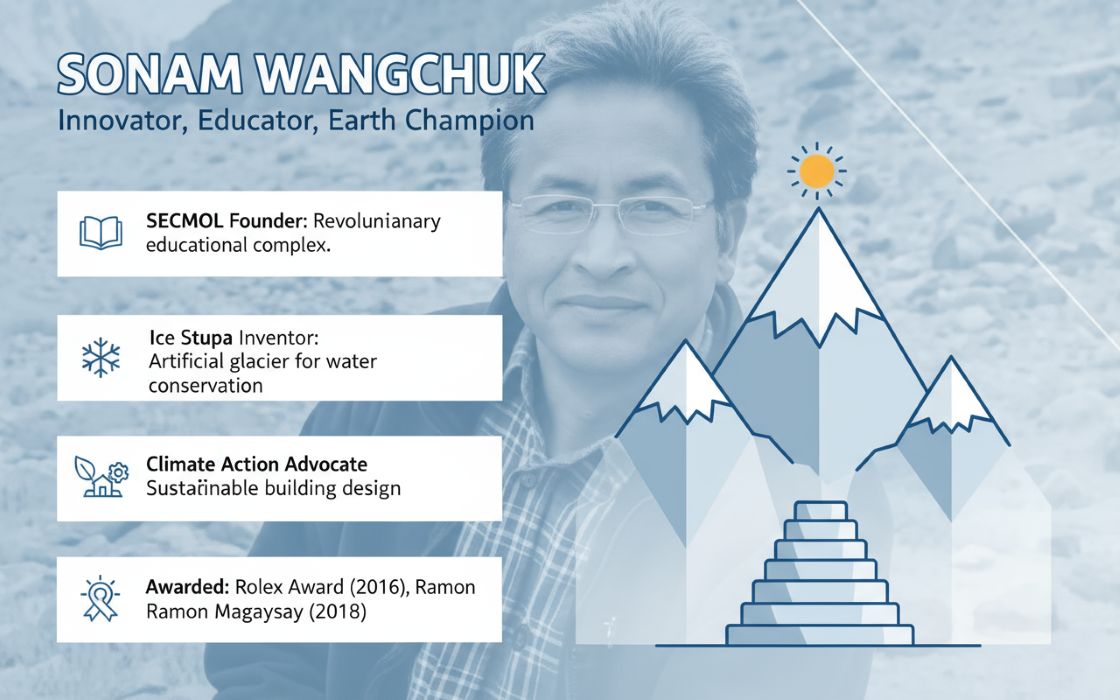Climate innovators are rewriting the blueprint of India’s cities—one solar-ready rooftop, resilient community shelter, and energy-positive classroom at a time. At the forefront of this movement is Mr. Prasad Vaidya, Director, Solar Decathlon India (SDI), a design challenge that has rapidly evolved into the country’s largest net-zero building movement.
In this exclusive interview with TheCSRUniverse, Mr. Vaidya explains how SDI is breaking the “demand-supply-skill” logjam that has long stifled green construction, and how it is equipping more than 150 multidisciplinary student teams each year to deliver real-world, commercially viable climate-tech solutions. He shares success stories—from bamboo-reinforced foldable balconies for construction-worker housing to low-cost fan-retrofit cooling devices—and reveals how partnerships with Infosys, World Bank, and leading real-estate developers are propelling these ideas from studio to skyline.
Read on to discover how SDI’s hands-on pedagogy, climate-smart innovation exhibition, and rapidly growing alumni network aim to ensure that one in ten new building professionals entering India’s workforce by 2030 can design for true net-zero performance—shifting sustainability from a checklist to the core of investment and development strategy.
Read along for deeper insights:
Q. Solar Decathlon India has grown to become one of the most impactful net-zero design challenges in the country. What was the core vision behind launching SDI in India, and how has that evolved over the years?
A. The core vision behind launching SDI was to empower the next generation of building professionals to design and innovate for net-zero energy, water, and emissions in India’s built environment. This was driven by the need to break the vicious cycle that exists in India’s building sector where consumers don’t demand net-zero energy (NZE) and resilient buildings, so developers don’t provide them, and academic institutions don’t train students to design them. This poses a serious threat to the climate action India urgently needs. Every year over 500,000 students graduate from architecture and engineering programs, yet their education often lacks exposure to climate change mitigation through design.
SDI set out with four core objectives: train students to become climate-ready professionals; engage industry and build awareness; shift consumer mindsets through youth-led innovation; and generate ripple effects in policymaking. Over the years, the challenge has evolved to emphasize innovation in the building sector, facilitate career opportunities through a growing alumni network, and develop solutions tailored for vulnerable communities such as construction workers through the Construction Worker Housing Division and existing residences in need of affordable cooling through the Residential Cooling Retrofit Division.
Q. You’ve previously said SDI is no longer just a competition but a movement. Could you elaborate on how this transformation has taken place and what it means for India’s green building sector?
A. SDI has become a movement because it goes beyond awards and recognition. It’s about building a mindset, and about inspiring students, faculty, professionals, and policymakers to commit to a net-zero future. The transformation happened through the growing ecosystem of mentors, partners, and alumni who are actively shaping India’s green building sector. Today, SDI influences curricula, drives market-relevant research, and fosters a culture of climate entrepreneurship.
Q. How is SDI contributing to the creation of India’s next generation of climate-tech professionals, entrepreneurs, and policy influencers?
A. SDI equips students with hands-on experience in developing real net-zero building solutions, guided by expert mentorship and state of the art tools. Participants graduate not just with knowledge, but also with portfolios of solutions to complex problems, connections to industry, and prototypes of products. Many alumni have gone on to work in leading firms, start their own ventures, or influence policy through research and advocacy. SDI is effectively seeding the building industry with climate leaders who understand both the science and the systems of sustainable development.
Q. Can you share some notable success stories or real-world projects that emerged from SDI teams that are now being implemented or scaled?
A. Several SDI teams have translated their innovations into real-world opportunities. Multiple teams are in the process of applying for patents for their prototypes. Some are in conversation with their project partners to get their designs implemented. These include teams from Institute of Engineering and Management Kolkata, RV University, Jindal University, Jawaharlal Nehru Architecture and Fine Arts University, IIT Kharagpur, Bhanuben Nanavati College of Architecture, IIT Bombay, Manipal Institute of Technology, and Manipal School of Architecture and Planning. The World Bank has also shown interest in the quality of the solutions provided by the students for net-zero energy and water community resilience shelters for Assam.
Q. The 41 finalist teams this year represent diverse academic and geographic backgrounds. What are some innovative trends or breakthrough ideas that have stood out to you from this cohort?
A. We have seen many innovative solutions over the last five years. Some examples include the high-density, high-rise housing project by Team Genesis in 2023-24 and the office building in Chennai by Team Ecocult and the community resilience shelter by Team Tejasvi in 2021-22.
This year Team Anvaya proposed a Construction Worker Housing solution that included foldable balconies. Made from bamboo mats and steel cables, these are lightweight, modular, and easily retractable for flexibility in high-density housing. The team innovated these balconies to address issues of cramped spaces and poor light and ventilation in typical construction worker housing. Team Yakairol designed a dual-use, disaster-resilient school and emergency shelter for Fakali Village in Assam. They used locally sourced low-carbon materials such as AAC blocks, PPC cement, bamboo panels, and CSEB flooring to minimize environmental impact. In the product design division Team Kalpana proposed a VAYU - a low-cost cooling solution for hot, humid climates. It is a compact retrofit device that can be fit on to existing ceiling fans and focuses on both cooling and dehumidification.
Each of these projects reflects technical ingenuity along with a deep understanding of India’s local climate and social context.
Q. SDI has built a strong ecosystem involving academia, industry, and government. How crucial are these partnerships to the challenge’s success, and could you highlight any exemplary collaborations?
A.These partnerships are foundational to SDI. Academia brings fresh ideas, industry provides practical feedback and tools, while the government enables scale and policy alignment. Like I mentioned previously, The World Bank has shown interest in the quality of the solutions provided by the students for net-zero energy and water community resilience shelters for Assam. Council of Architecture’s formal support of SDI has led to many architecture colleges in the country embedding SDI into their curriculum. Harmony Lifestyles Group, Infosys, Lodha, Mahindra Lifespaces, Sobha Ltd., Sumadhura Infracon, TATA Realty, and World Bank are SDI’s Empaneled Project Partners (EPPs) and have committed to a long-term association. This includes considering the students’ designs for implementation in their projects and hiring SDI alumni to work in their organizations.
Infosys goes beyond being an EPP and also supports SDI by hosting the SDI Finals event at the Infosys Mysuru Campus pro bono. This includes event venues, accommodation, and food for all attendees for 4 days. Infosys Mysuru is one of the most sustainably operated campuses in the world. Attending the Finals event there gives all the participating students, faculty, and industry representatives an opportunity to experience world class net-zero facilities.
Kotak Mahindra Investments Limited (KMIL) plays a key role in supporting SDI through their CSR funding. This signals a rising awareness of the need to invest in climate education and scalable net-zero solutions. Support like this is critical to sustaining an initiative like SDI, which operates at the intersection of education, innovation, and climate action.
Q. What kind of mentorship and industry exposure do SDI participants receive, and how does it enhance their ability to develop commercially viable solutions?
A. SDI provides a layered mentorship model. Students receive collective learning through expert-led webinars. They get targeted feedback on their submissions that are reviewed by experts from the building industry and select members of the Technical Resource Group (TRG). TRG members are past participants from Solar Decathlon competitions worldwide, and in addition to technical mentorship to the teams, they give valuable advice given their experience working on the competition deliverables, schedule, and collaborating in a multidisciplinary environment. Participants also get access to advanced simulation software and a curated ‘Survival Kit’ of resources and tools.
This exposure ensures that their designs are not just theoretical, but viable and scalable in real markets. The feedback loop from experts accelerates their learning and pushes them to think entrepreneurially, preparing them for careers in the sustainable building industry. Many students secure jobs or internships through the SDI Career Fair, and the alumni network continues to act as a bridge between academic talent and industry demand.
Q. The Climate Smart Innovation Exhibition is a unique platform embedded in SDI. How does this initiative bridge the gap between innovation and market adoption for startups in the climate-tech and building sector?
A. The Climate Smart Innovation Exhibition acts as a launchpad for startups working at the intersection of climate change and the built environment. It brings together investors and potential customers to engage directly with these startups. This platform facilitates critical conversations around commercialization, adoption, and collaboration. For startups, it’s an invaluable opportunity to validate their solutions and form partnerships for real-world deployment. It also exposes the students to the nature of innovation that’s happening around us.
In 2024 Infosys offered to pilot promising innovations from the Climate Smart Innovation Exhibition, and Priyank Garg – Managing Partner, IAN Alpha Fund, recognized the potential of these innovations and committed to taking the conversation forward with the exhibitors. This includes potential investment opportunities and advice on how to take their businesses to the next level. This year our investor network for CSI includes Brigade REAP, ClimateXcapital, Edhina, Indian Angel Network, Nirmaan Ventures, The Sustainability Mafia, and Transition VC, further strengthening the connection between the innovation and market adoption for the startups.
Q. How is SDI addressing India’s specific needs and challenges in achieving net-zero goals, particularly in terms of energy-water nexus, cooling solutions, and building resilience?
A. SDI focuses on real projects in varied climate zones and socio-economic contexts. Student teams compete in six divisions addressing unique problems that need customised and scalable solutions. They work directly with developers, building owners, and product manufacturers in numerous cities, offering customized net-zero solutions. These solutions need to excel in 10 contests that include energy, water, affordability, and more. The Energy Performance and Water Sufficiency contests address the crucial energy-water nexus.
Energy Performance along with Engineering Operations and Health & Wellbeing contests also provides the framework to address the country’s growing cooling needs. The Community Resilience Shelter Division and the Resilience contest in all the Building Divisions lay the groundwork for teams to create resilient designs. The Residential Cooling Retrofit Division, which is a product design challenge sparks the innovation needed to improve energy efficient cooling in existing residences. Together, these elements ensure that SDI prepares students to tackle India’s pressing climate challenges, and helps them generate practical, high-impact solutions that can be implemented across the country’s diverse built environment.
Q. How does Solar Decathlon India compare with similar global challenges, and what unique contributions is India making to the global net-zero and climate innovation narrative?
A. SDI stands out globally because of its real-world integration and sheer scale. It is the world’s largest net-zero building design challenge. SDI has had over 150 teams participate for 3 consecutive years. In comparison, the participation numbers in SD China, SD Africa, SD Middle East, SD Europe range from 15 to 20 teams. Every year SDI conducts a Faculty Development Programme for faculty mentors involved in the challenge. This is intended to help them become future-ready educators and mentors to students interested in becoming leaders for net-zero. Over the last 5 years we have seen over 280 developers and building owners offer their projects for students to work on. This large-scale involvement from the building industry is unique to SDI.
Each year organizations across the country participate in the SDI Career Fair to offer internships and early career opportunities to SDI participants and alumni. The alumni network itself is a place for past participants of SDI to stay connected and share networking and career opportunities. All these elements set SDI apart from other global challenges.
SDI is helping propel innovation in the Indian building industry through the Residential Cooling Retrofit Division by bringing innovation into college classrooms and through the Climate Smart Innovation Exhibition and Award by giving startups a dedicated platform with access to investors and customers in one place. We participated in the recent COP29 in Azerbaijan and engaged with global organizations such as Rocky Mountain Institute, Efficiency for Access UK, Chartered Institution of Building Services Engineers (CIBSE), LinkedIn, and more to further the conversation on innovation in buildings and climate.
We have authored multiple papers and a book chapter that delve deep into different aspects of SDI and how it aids innovation. This includes papers on the effectiveness of SDI's innovative approach to education, its scalability as a model for educating architects and engineers about net-zero and climate resilient buildings and how it forms a robust framework that can be used in education curricula in India, and how access to learning resources and building simulation tools can aid students in creating evidence-based designs.
We made the learning modules given to SDI participants available to everyone outside SDI through Coursera. Since its launch last year the Net Zero Building Fundamentals Course has over 7,700 people enrolled in it. SDI also played a key role in the formation of Accelerating Sustainable and Super-Efficient Real Estate (ASSURE) - an initiative to transform India’s carbon and energy-intensive real estate sector by promoting High Performance Buildings (HPBs).
This shows that we are pushing the boundaries of both education and innovation in the national and global net-zero narrative.
Q. What is your vision for SDI over the next five years, and what systemic shifts would you like to see in India’s approach to sustainable buildings and climate-responsive design?
A. Our vision is that by 2030, 10% of architects and engineers entering the building sector in India will be capable of delivering net-zero and climate-resilient solutions, having undergone training through SDI or similar initiatives.
Systemically, we want to see a transformation in how sustainability is taught and practiced. Multidisciplinary problem-solving should be integral to classroom learning and industry practice. Practitioners must be climate-literate, justice-aware, and equipped to lead climate action, not just follow codes. India must move from a checklist-based green rating approach to performance-driven design. Finally, we envision a real estate sector where climate risk is factored into financial decisions, shifting sustainability from the periphery to the core of investment and development strategy.




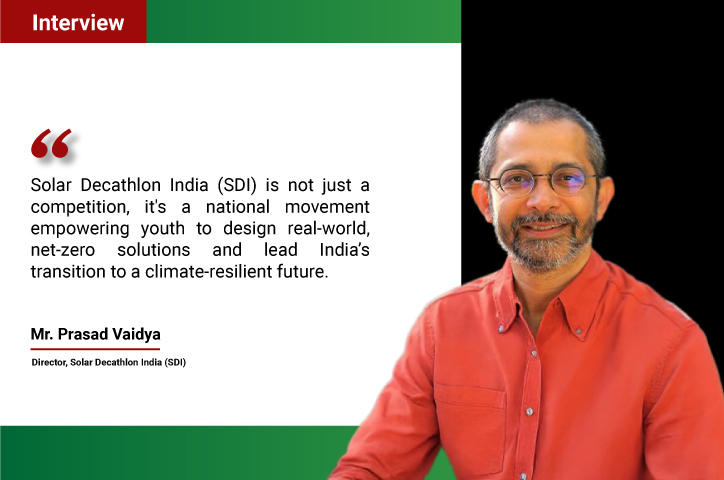
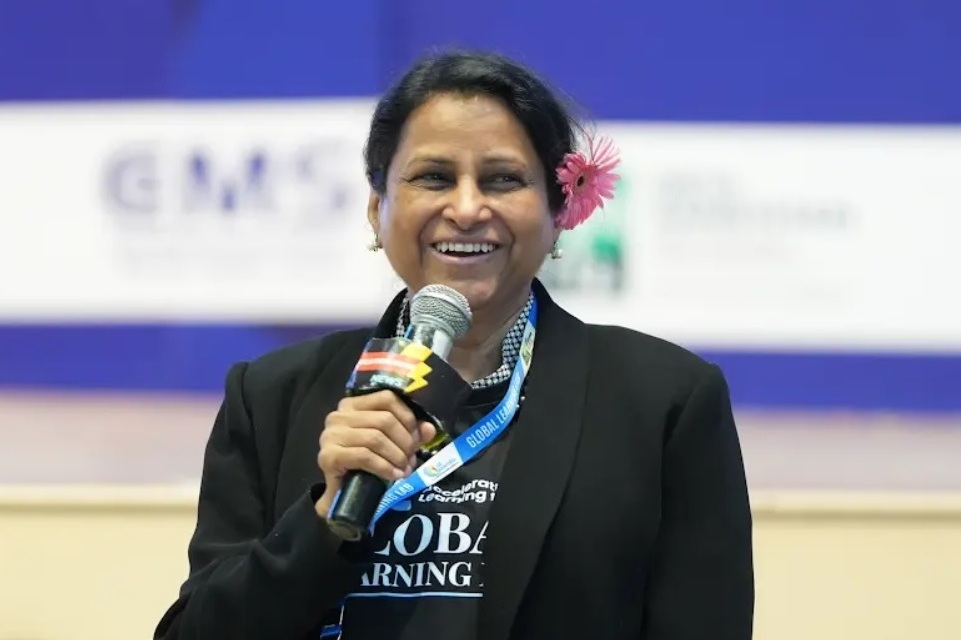
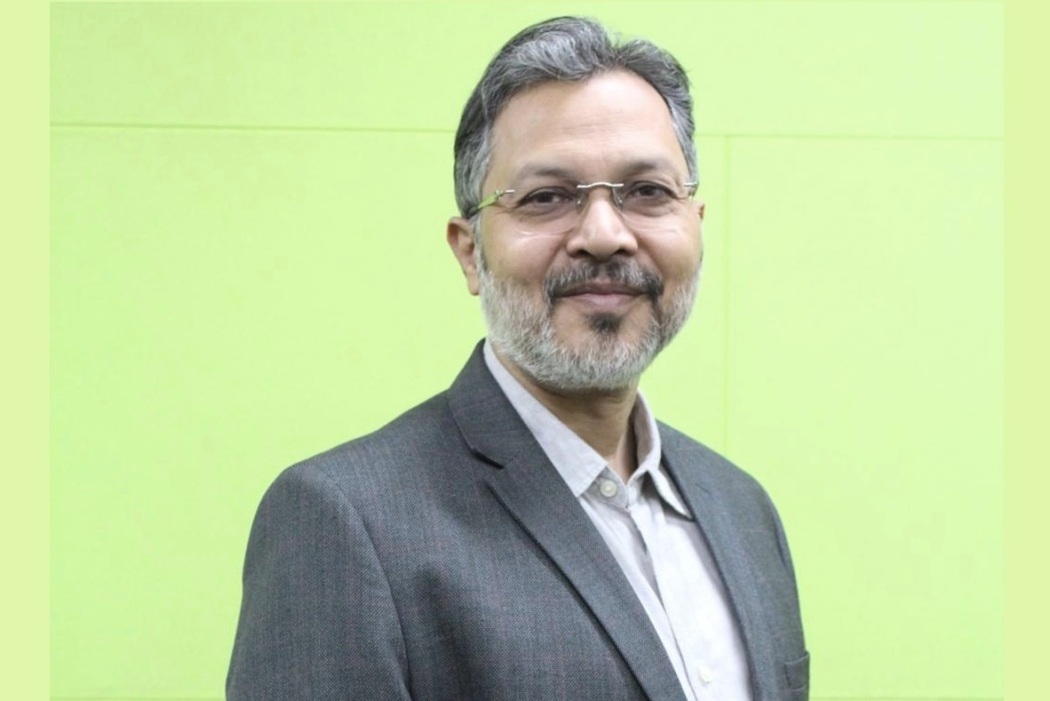
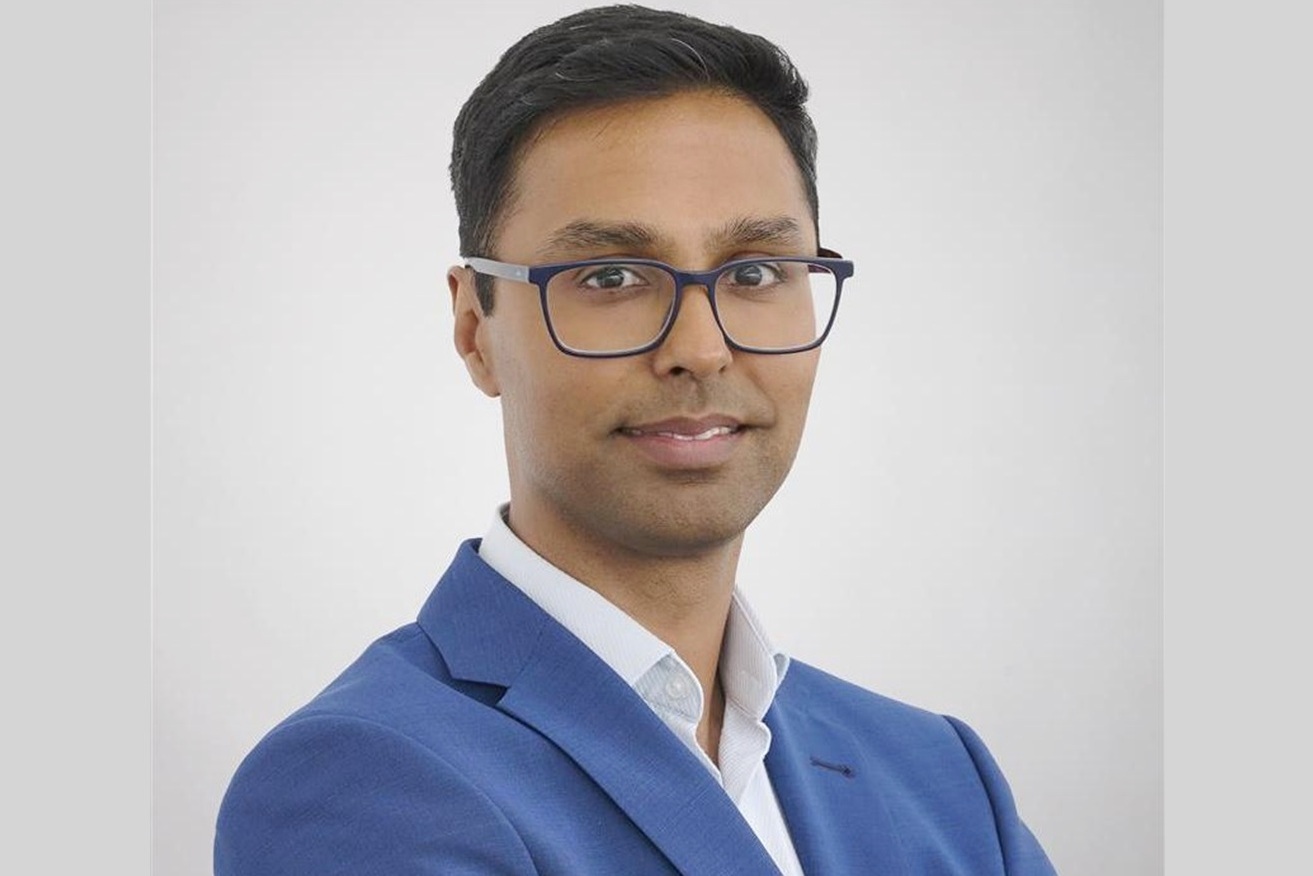

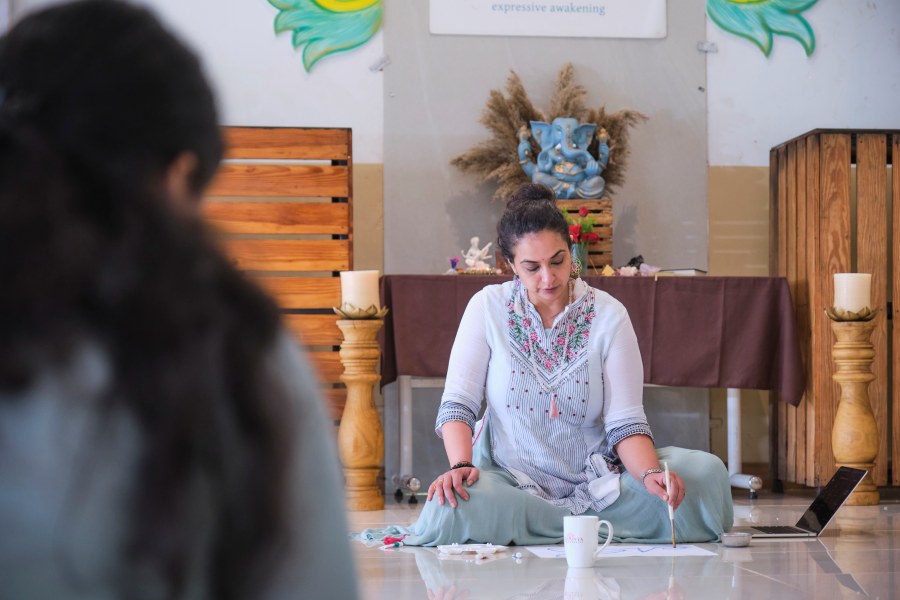
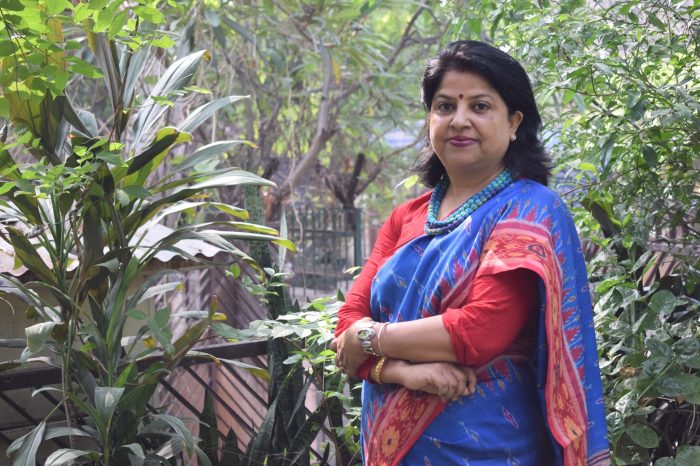

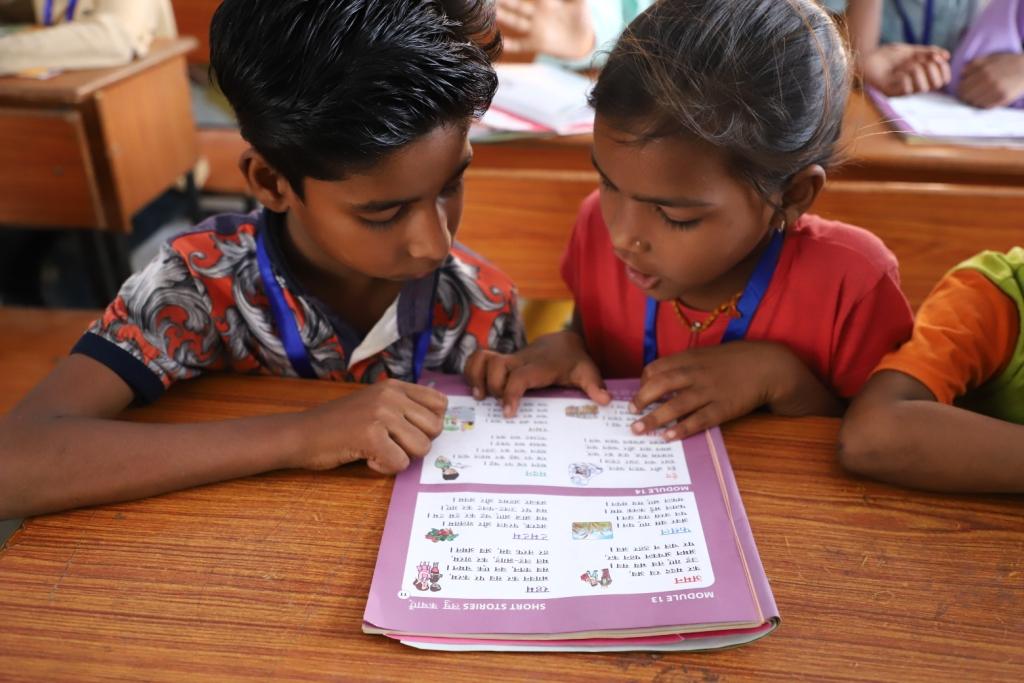
.jpg)

